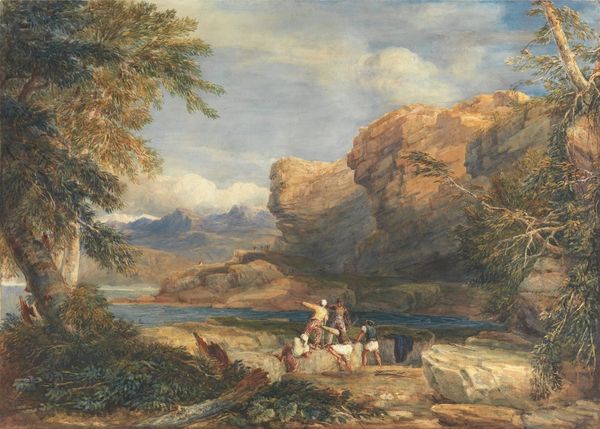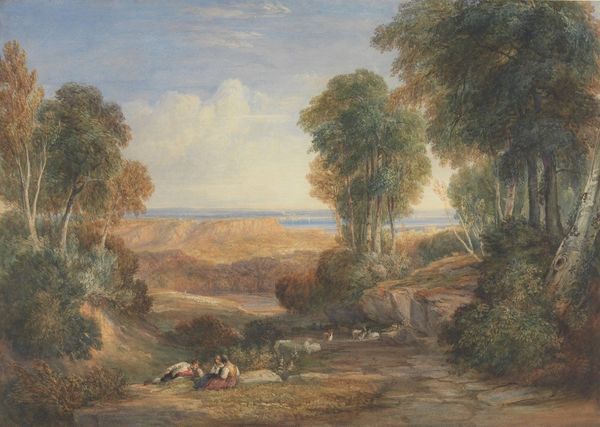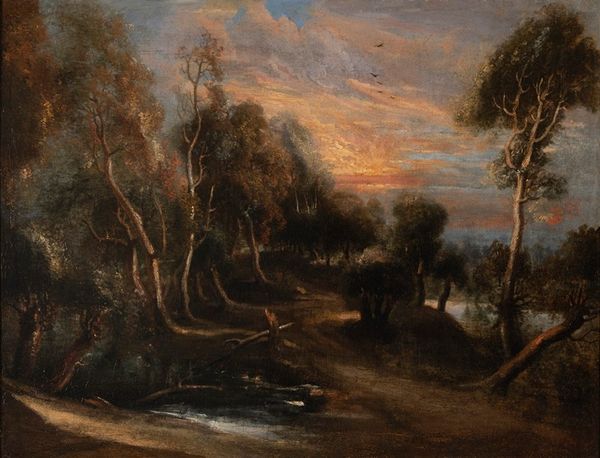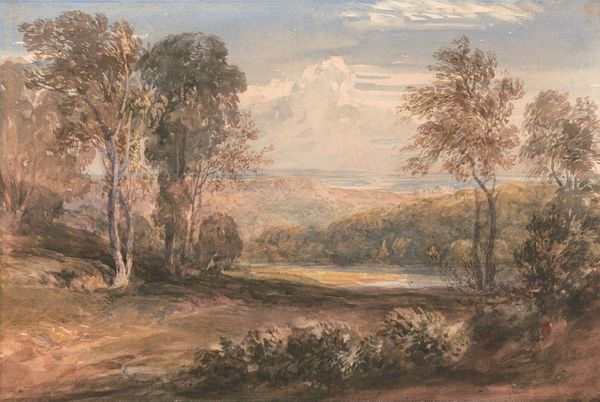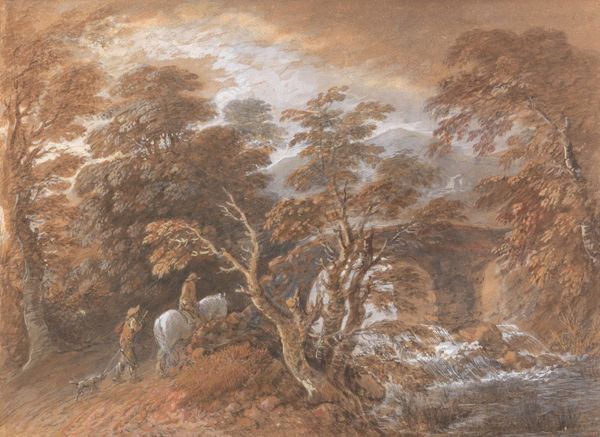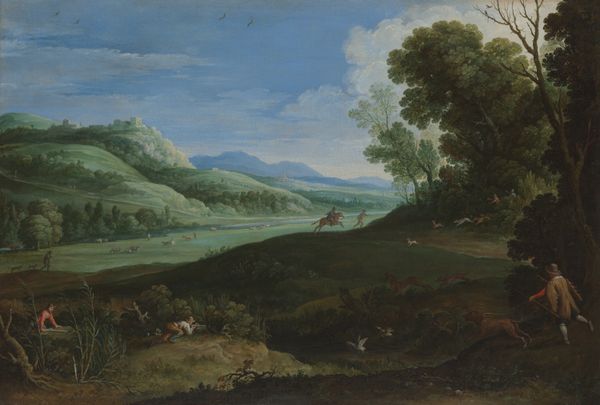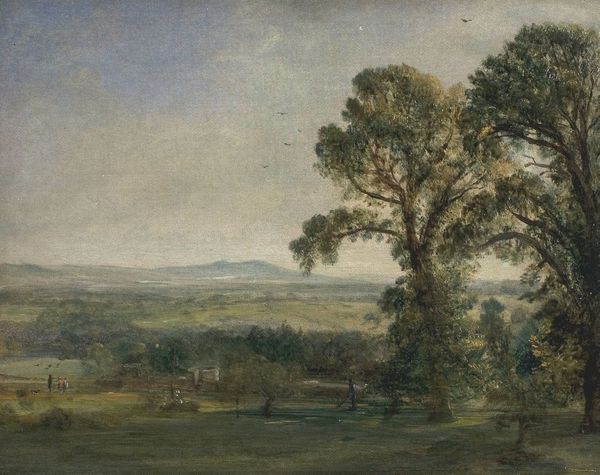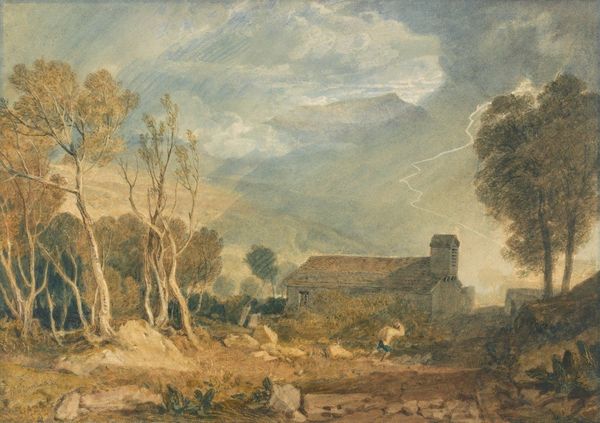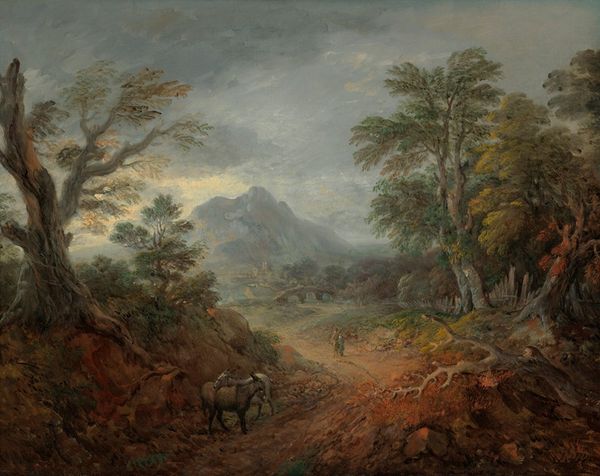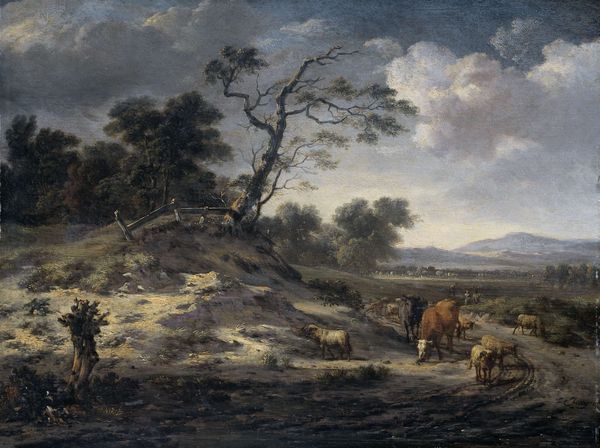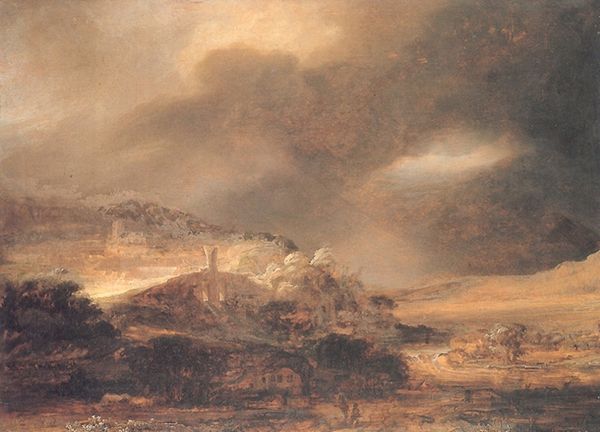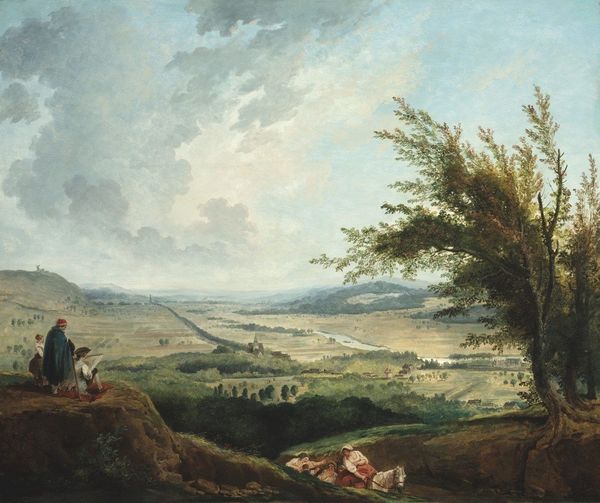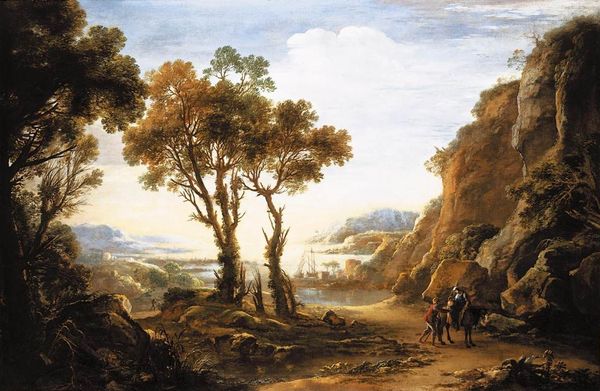
painting, oil-paint
#
painting
#
oil-paint
#
landscape
#
impressionist landscape
#
oil painting
#
romanticism
Copyright: Public Domain: Artvee
Curator: What strikes me most about this oil painting, Landscape with Cottages, made by James Ward sometime between 1802 and 1827, is the way the houses seem nestled almost protectively into the landscape. There’s a real sense of enclosure and shelter. Editor: My first impression is one of dramatic contrast. The sky feels vast and imposing, almost brooding, while the cottages below offer a sense of intimacy and the everyday. The scene could easily lend itself to an illustration in a romantic novel! Curator: Yes, the turbulent sky certainly speaks to Romantic ideals. But look closer. The cottages, while seemingly idyllic, appear almost… burdened by the earth itself. The colors are muted, the lines heavy, suggesting a certain weight or perhaps even a premonition about changes to come to these people's agrarian existence. It's a powerful, subtle piece of social commentary as the land was being dramatically impacted by industrialization. Editor: I agree; there’s definitely a tension there. The presence of figures on horseback – likely landowners or travelers – underscores a power dynamic between those who inhabit the land and those who merely traverse it. Ward highlights how changing social structures were quite literally reshaping the land and altering traditions in Britain. Curator: Absolutely. Notice how the cottages lack ornamentation. These aren’t symbols of prosperity but rather simple, almost humble, dwellings, rooted in older archetypes of rustic living. Smoke curling from the chimney carries the age-old symbolism of domestic warmth and familial continuity and perhaps some foreboding, too. Editor: Indeed, the smoke could symbolize vulnerability in a rapidly changing world. But let’s not overlook the artist's technique here. The broad brushstrokes and earthy tones evoke a palpable connection to the physical land itself. It almost romanticizes the harmony that existed prior to those dramatic cultural shifts you referenced earlier. Curator: The landscape here serves almost as a mirror, reflecting the socio-economic forces at play in early 19th-century Britain, when an enormous rural labor force began a migration to factories and industrial opportunities in the city, completely abandoning landscapes like this. Editor: A vivid portrayal that echoes today, too. It serves as a compelling reminder of how art captures both moments in time, while resonating across broader themes of human experience, memory, and progress. Curator: Ultimately, Landscape with Cottages embodies not only the physical beauty of the countryside, but also the enduring social and economic narratives etched upon the land, creating a dialogue between presence and absence that resonates to this day.
Comments
No comments
Be the first to comment and join the conversation on the ultimate creative platform.
